In Photos: Looking Inside the Great Pyramid of Giza
Inspecting the North Face
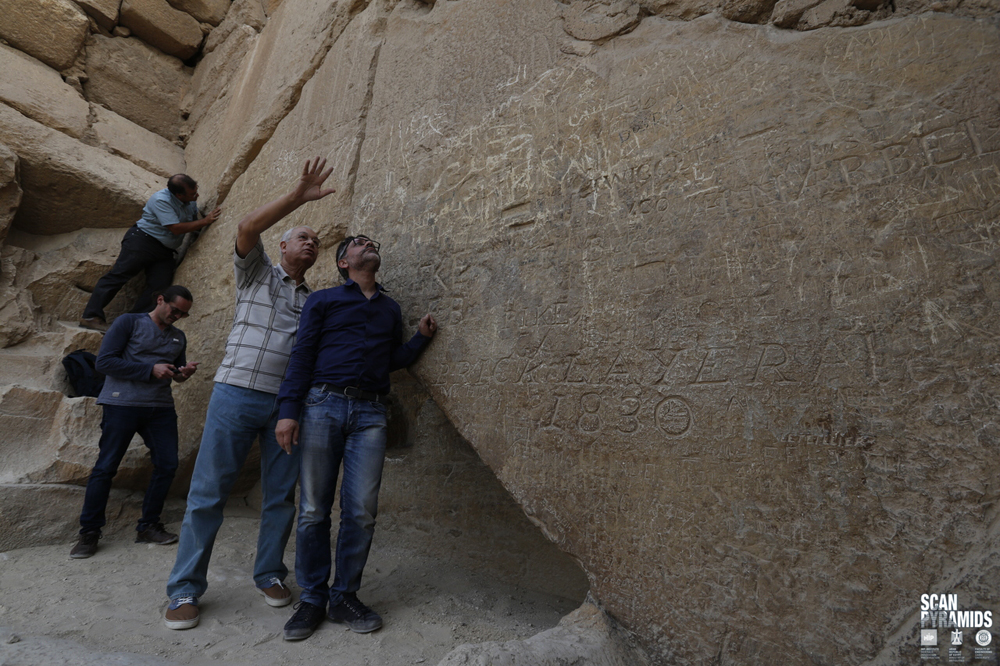
A group of scientists working on the ScanPyramids project claims to have found two unknown voids or cavities within the Great Pyramid of Giza. One of the voids is said to be behind the north face of the pyramid where building blocks in the shape of chevrons are now visible. This photo shows the ScanPyramids team inspecting the North Face Chevron Area. As the photo shows a lot of graffiti from the 19th and 20th centuries was left here. [Read full story about the Great Pyramid's possible chambers]
In 2017, the ScanPyramids team used three different techniques to look again inside the pyramid. In that study, reported in the journal Nature, they found a giant void above the Grand Gallery. Take a look at what scientists have found so far inside Khufu's pyramid.
Testing the anomalies
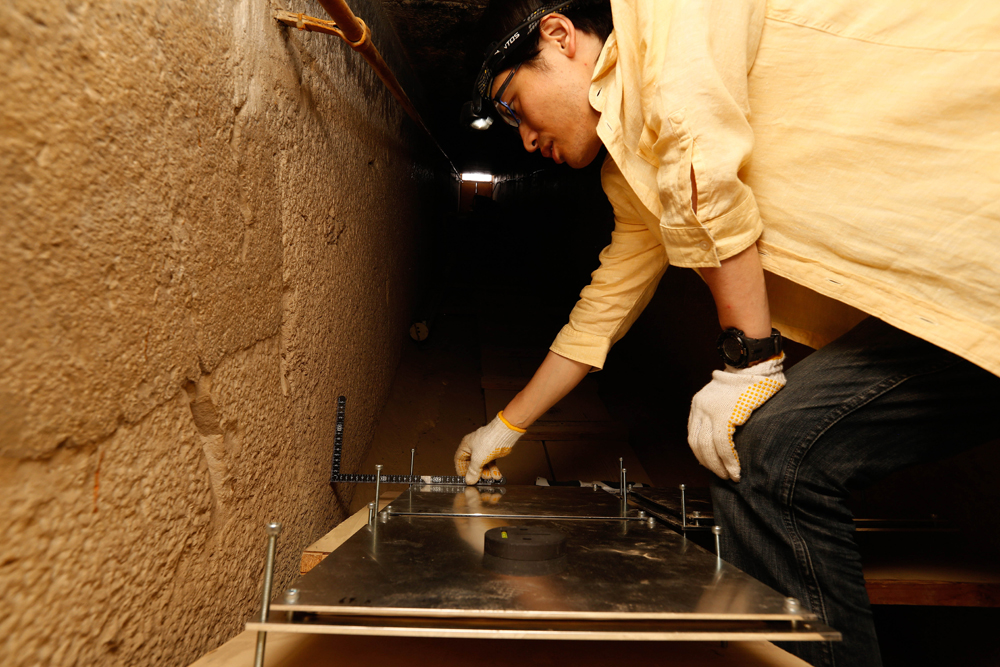
Scientists used muography, the analysis of particles called muons, to detect the voids. Muons are created naturally when cosmic rays hit the upper atmosphere. The particles travel close to the speed of light and travel easily through empty spaces but tend to bounce off of or be absorbed by denser material. This photo shows scientists from Nagoya University, in Japan, setting up muon detectors in the Great Pyramid's descending corridor.
Reconstructing the anomalies
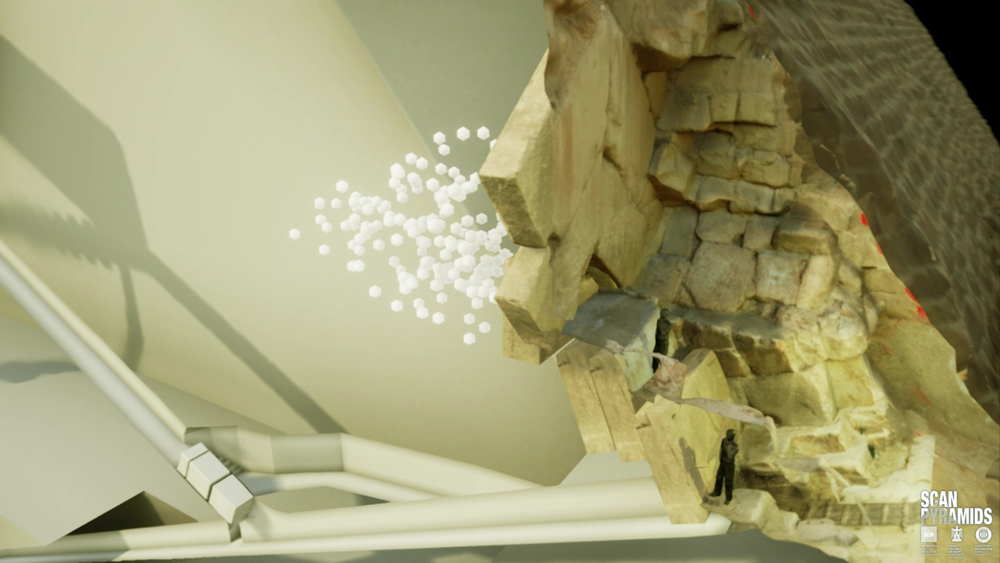
A 3D reconstruction showing a schematic view of the void behind the Great Pyramid's north face. Whether there is a substantial void, or whether the muons are simply detecting a mix of large and small blocks that were used to construct the core of the pyramid, is uncertain.
Similar locations compared
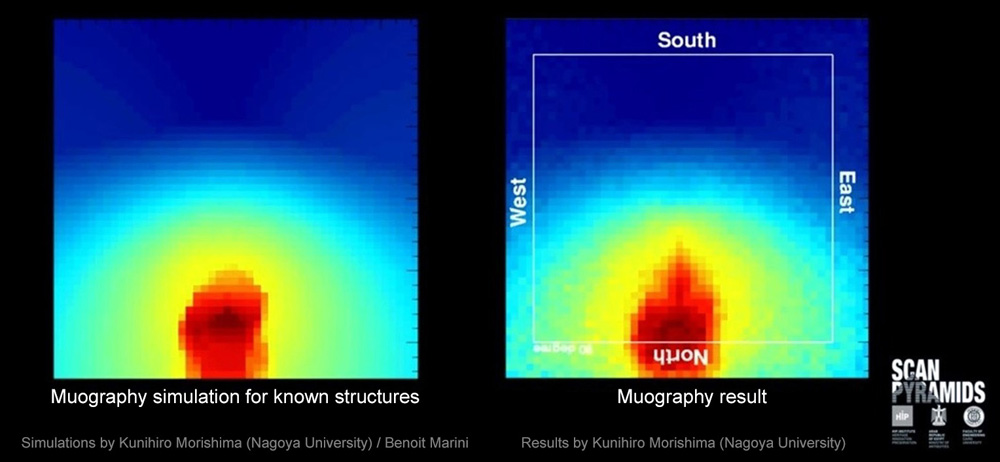
Comparison of a muography simulation that takes into account known structures in the Great Pyramid and the results the Scan Pyramids team got from the muon detectors set up in the descending corridor. The discrepancy of the two indicates an unknown void the Scan Pyramids scientists say. A group of Egyptologists overseeing the team's work is not so sure.
More strange findings
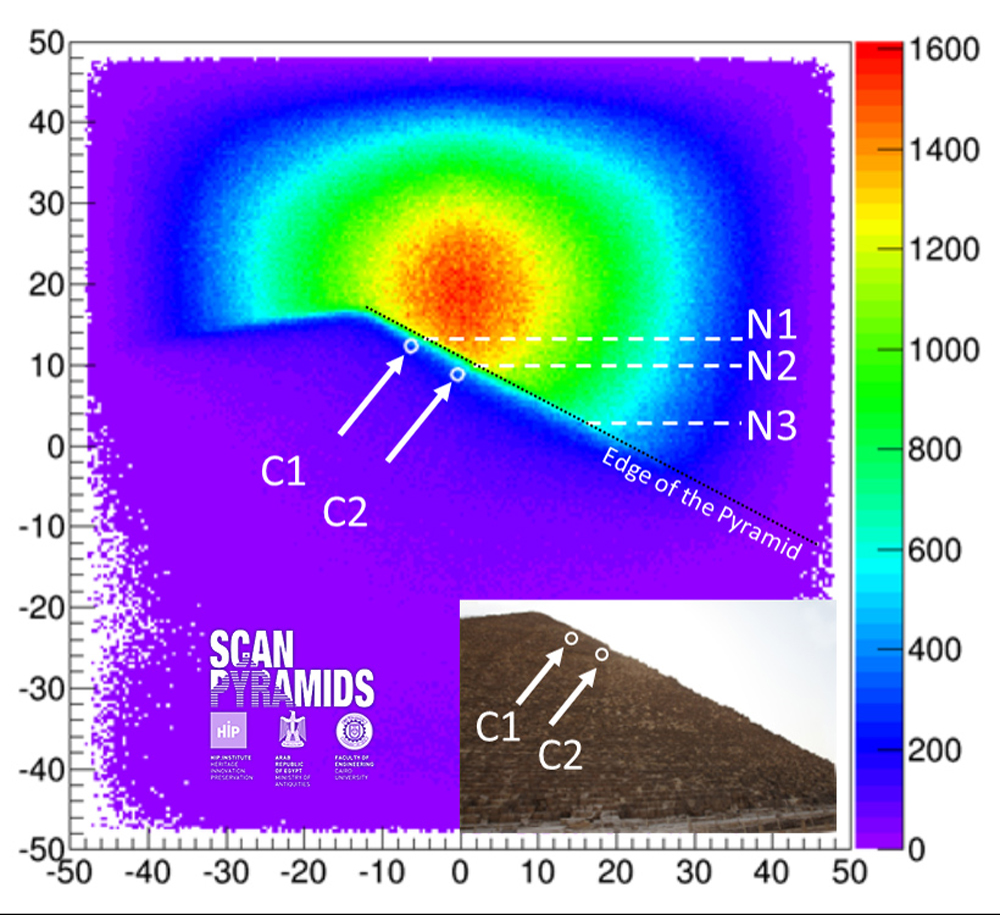
The second void was discovered on the northeast edge of the Great Pyramid about 105 meters (344 feet) above the ground. This image shows the Muography results for the north east edge. Cavity C2 was previously known to archaeologists while C1 is unknown. [Read full story about the Great Pyramid's possible chambers]
Second set of strange results
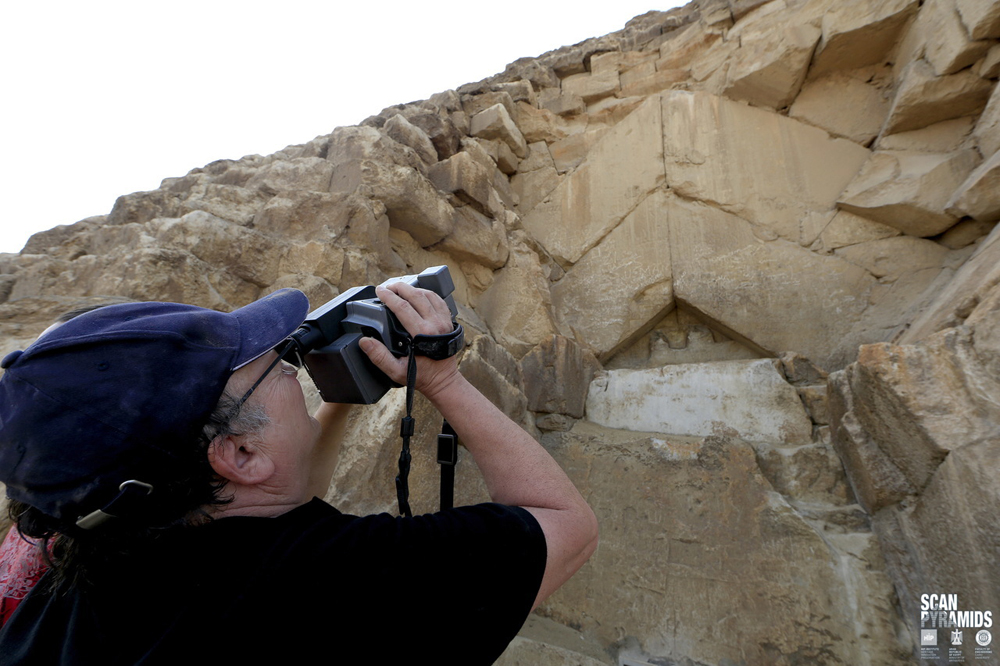
Aside from the muon survey an infrared survey of the area behind the chevrons also detected an anomaly. This photo shows the infrared short survey in progress.
Sign up for the Live Science daily newsletter now
Get the world’s most fascinating discoveries delivered straight to your inbox.
More data needed
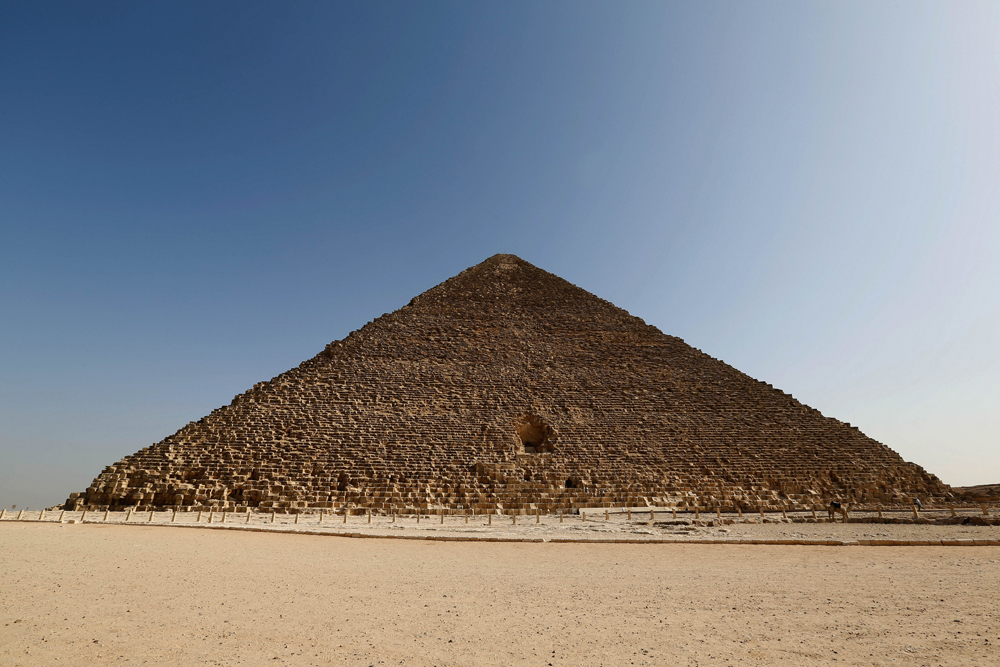
While the project scientists believe that two voids or cavities have been found the scientists overseeing the work are not convinced and have recommended that the mission be extended by a year to gather more data. This photo shows the north face of the Great Pyramid. [Read full story about the Great Pyramid's possible chambers]
Great Pyramid from Above
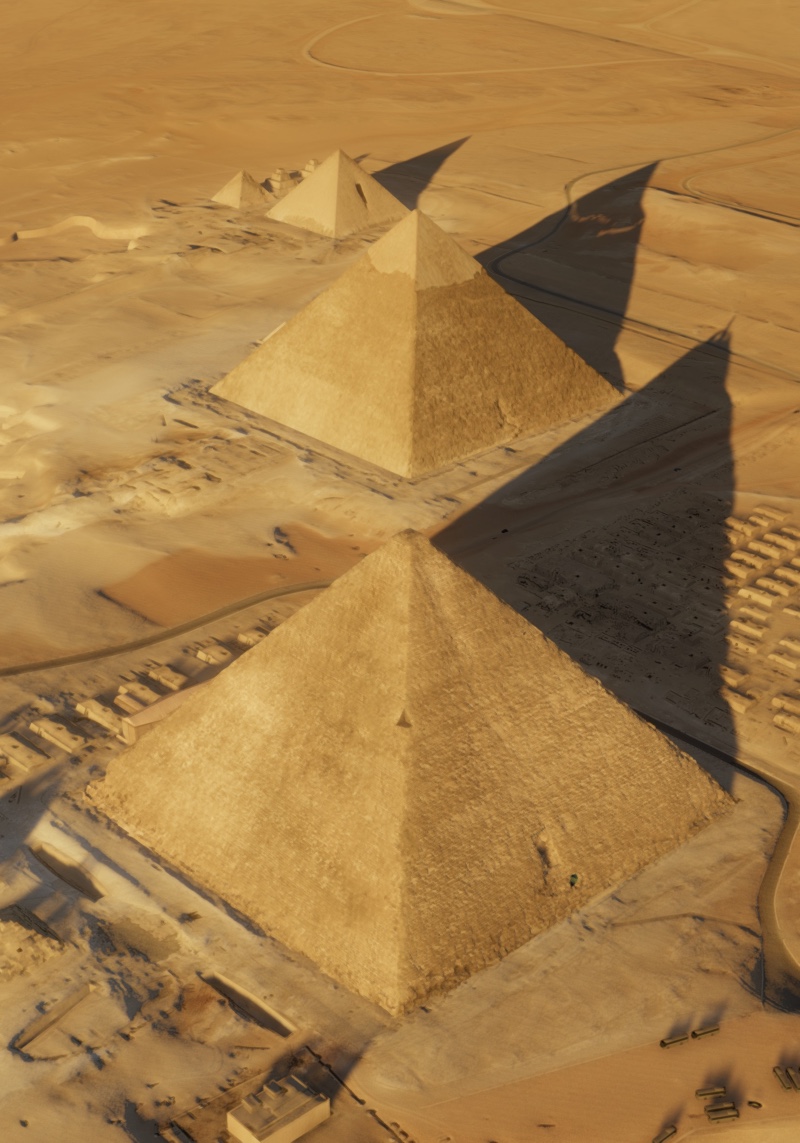
An aerial view of Khufu's pyramid, also called the Great Pyramid of Giza, reveals the massiveness of the structure, which was built during that pharaoh's reign from 2509 B.C. to 2483 B.C. When it was erected, the pyramid rose 481 feet (146 meters) tall, although weathering and quarrying of the pyramid has taken some of the structure's height; it now rises just 455 feet (138 m).
Grand Gallery
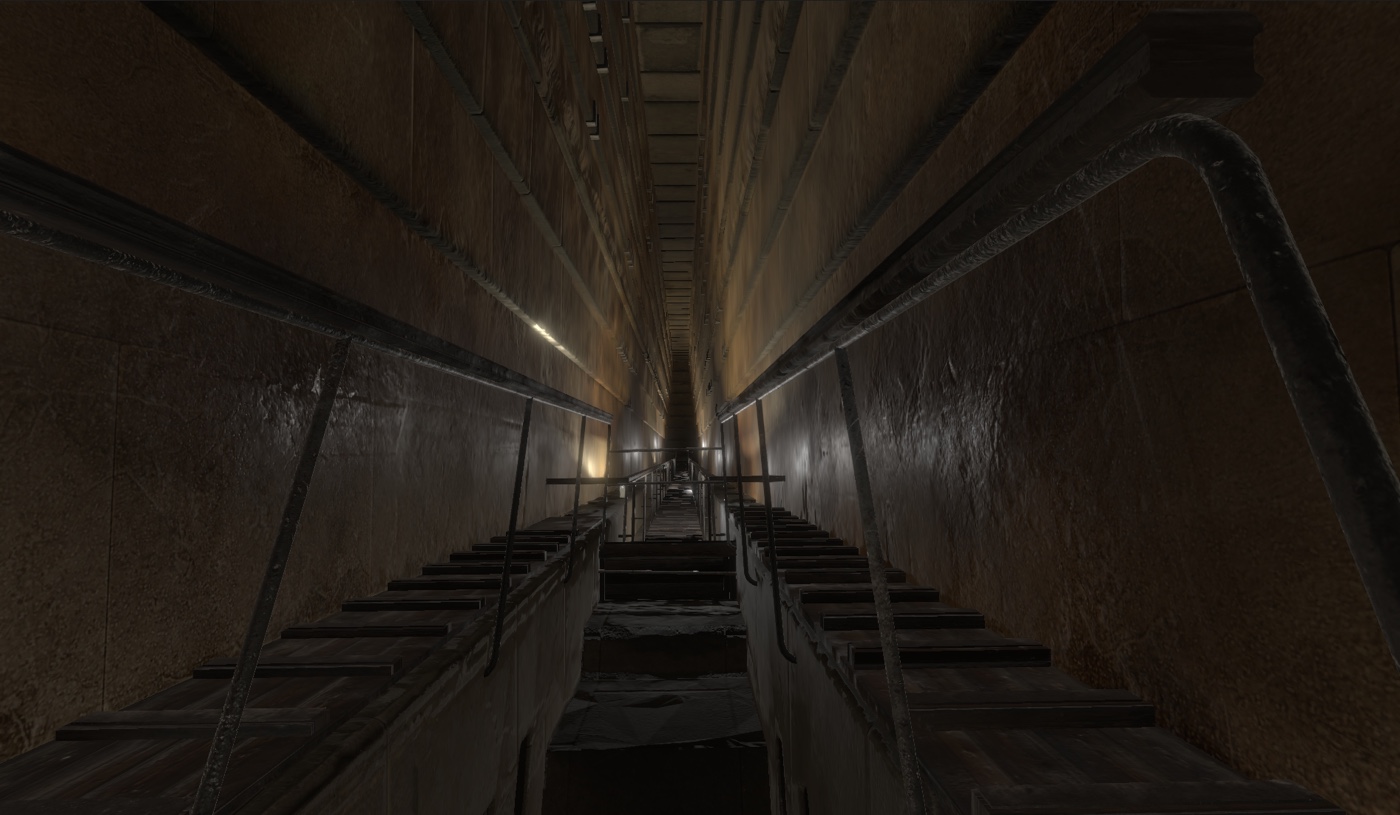
In 2017, scientists with ScanPyramids found what seems to be a large void right above the granite-walled Grand Gallery (shown here) in the Great Pyramid. This passageway leads from the "ascending passage" to the King's Chamber. They reported their research online Nov. 2, 2017, in the journal Nature.
Spotting a void
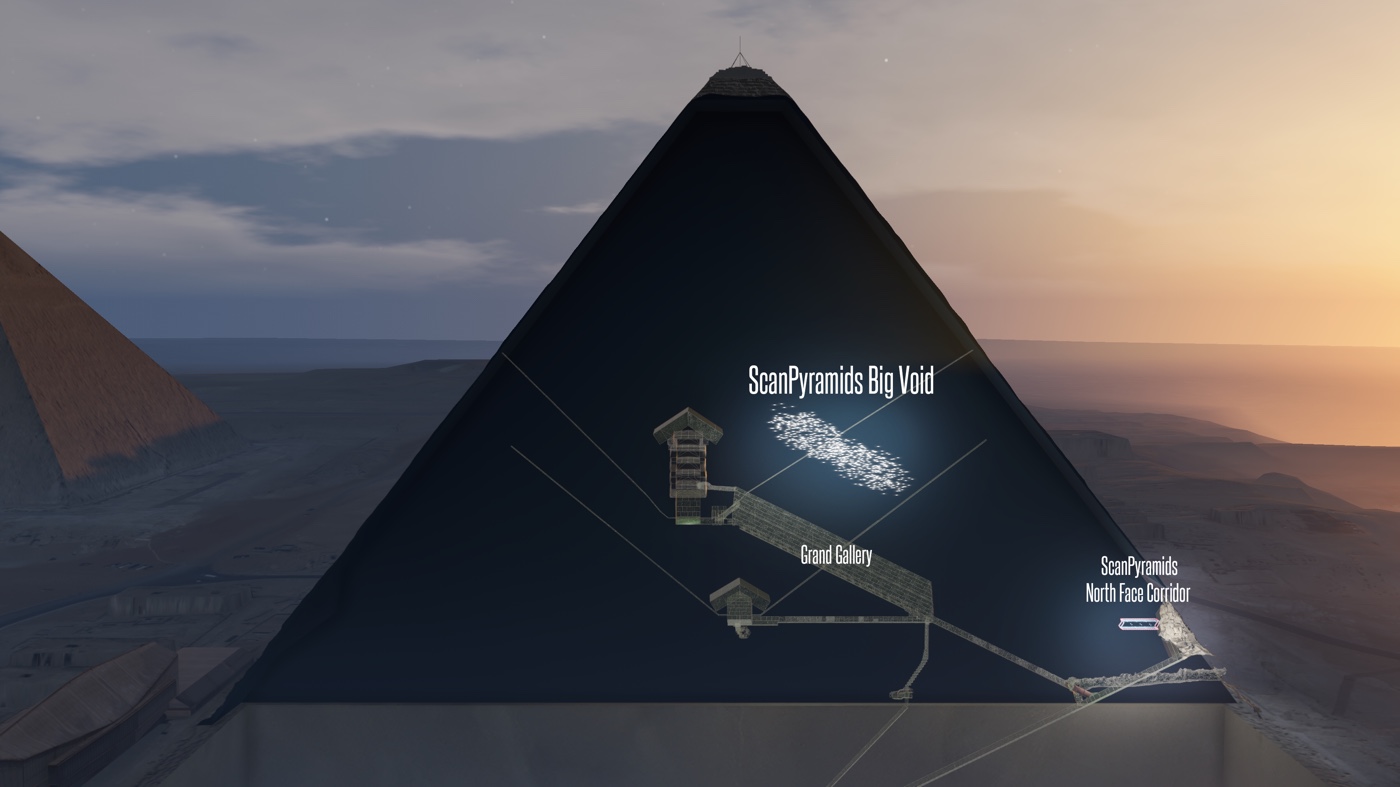
New research looking at the density of particles called muons has found an empty space (shown in this illustration) more than 98 feet (30 meters) long right above the pyramid's Grand Gallery.
Filming muons
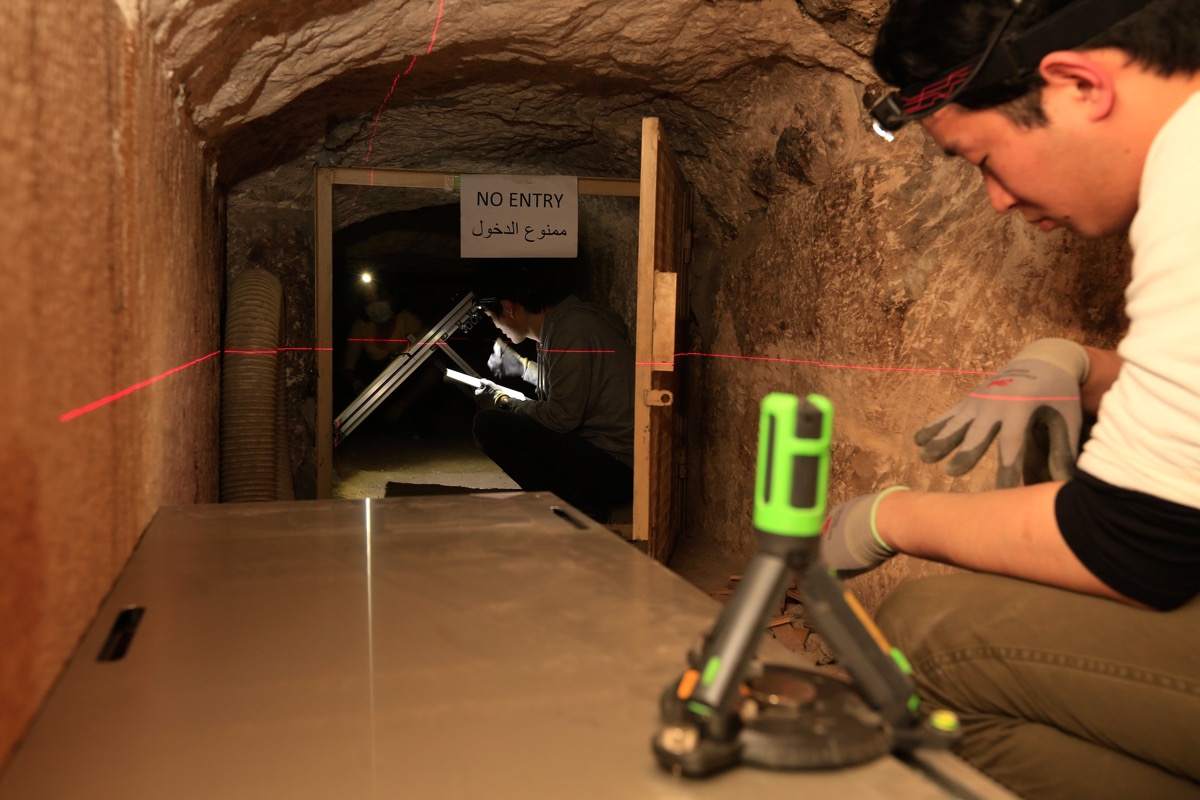
In one of the three methods the researchers used to detect muons, they used so-called nuclear emulsion films developed by researchers from Nagoya University in Japan. These films are similar to ordinary camera films except that in addition to capturing the movement of visible light, they also detect highly energetic particles. Here, the film is set up in the Queen's Chamber inside the Great Pyramid of Giza.

Owen Jarus is a regular contributor to Live Science who writes about archaeology and humans' past. He has also written for The Independent (UK), The Canadian Press (CP) and The Associated Press (AP), among others. Owen has a bachelor of arts degree from the University of Toronto and a journalism degree from Ryerson University.









